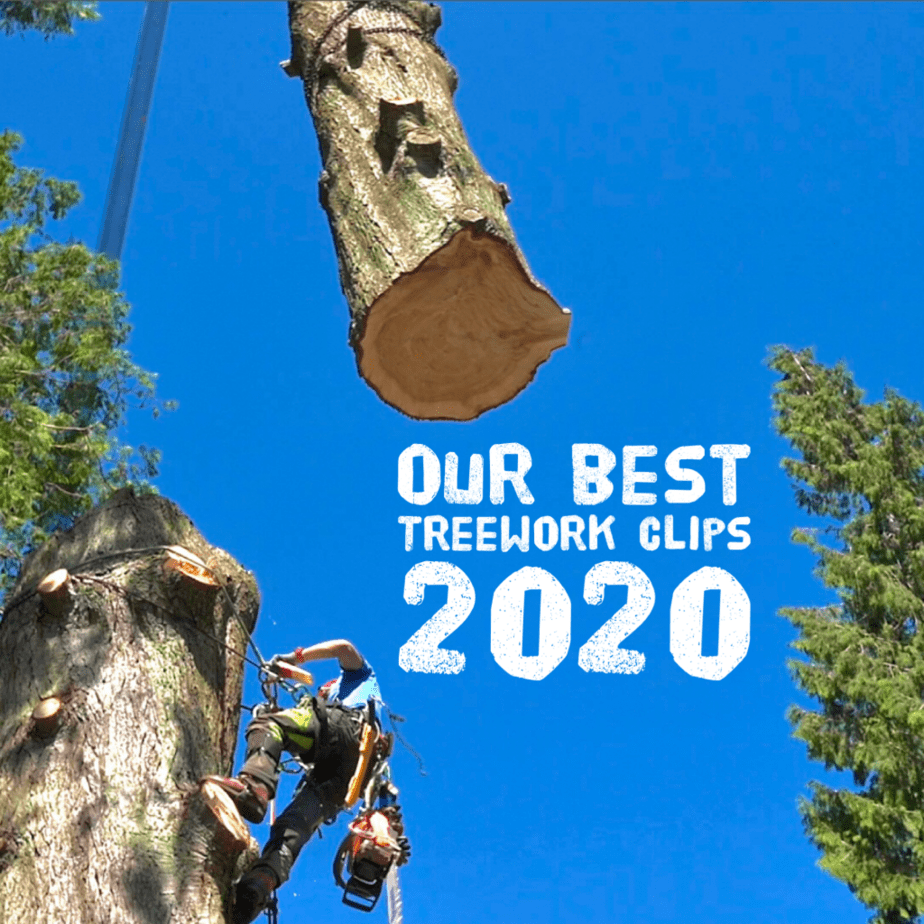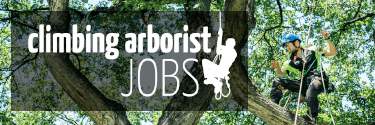Click an image to watch videos of various different types of tree work filmed out in the real world, featuring tree pruning and tree removals of varying difficulty and any other tree work projects we take on
Step Cut tutorial
Description
In this high quality video we describe in detail why and when you would want or need to make a step cut. We discuss the subtle changes you can make to your cut as the diameter of wood gets larger and we give you some clear and concise examples. All of this information is aimed as a guide to help you not waste time and energy making multiple cuts if you can get it right the first time. Video filmed and edited by InTree Media: bit.ly/InTreeWebsite
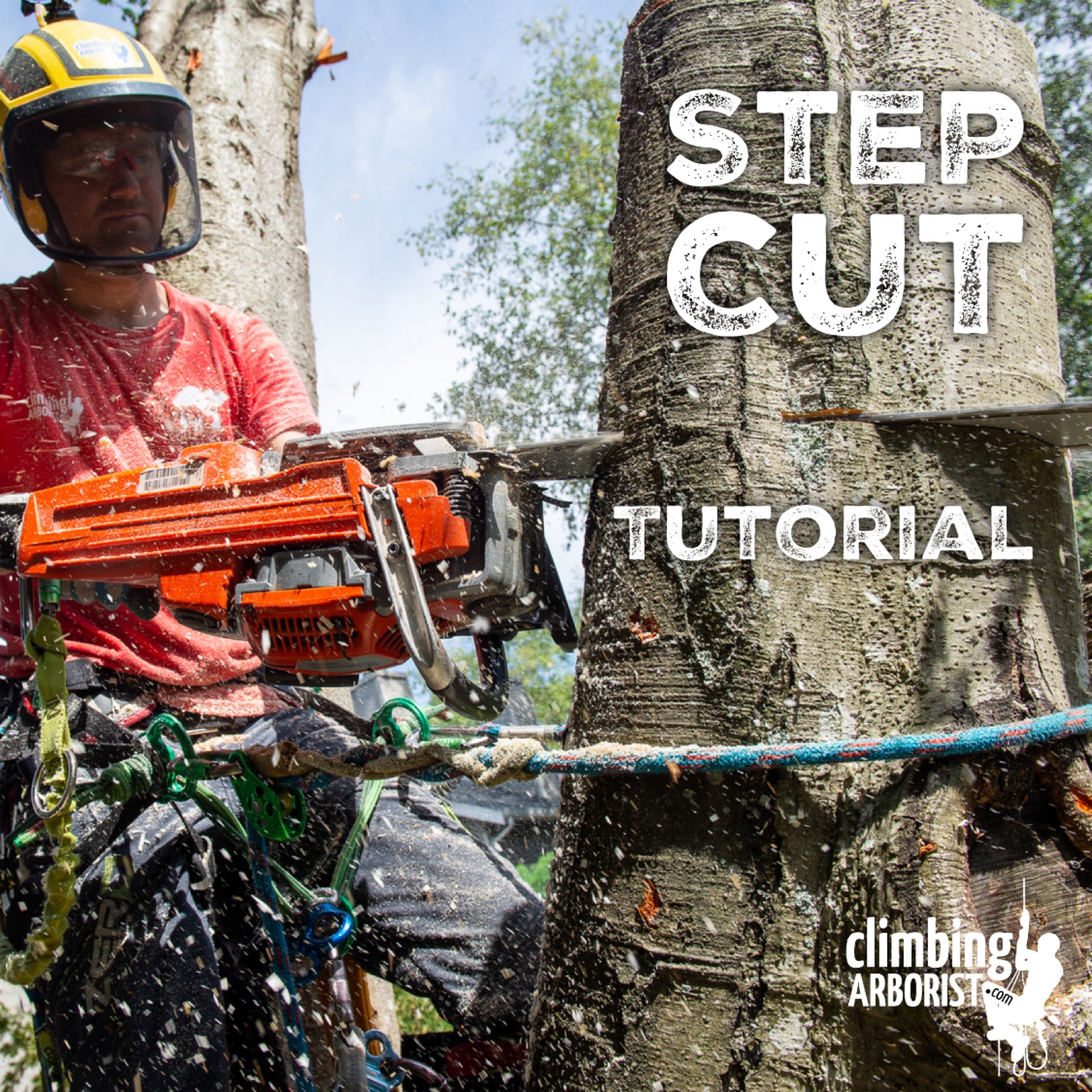
Key notch tree felling technique
Description
We give a step by step guide on how to perform the Key notch tree falling technique, also known as the tongue and groove falling technique. We explain the reasons when and why you might use this technique, as well as some important information on limitations of this tree falling style.
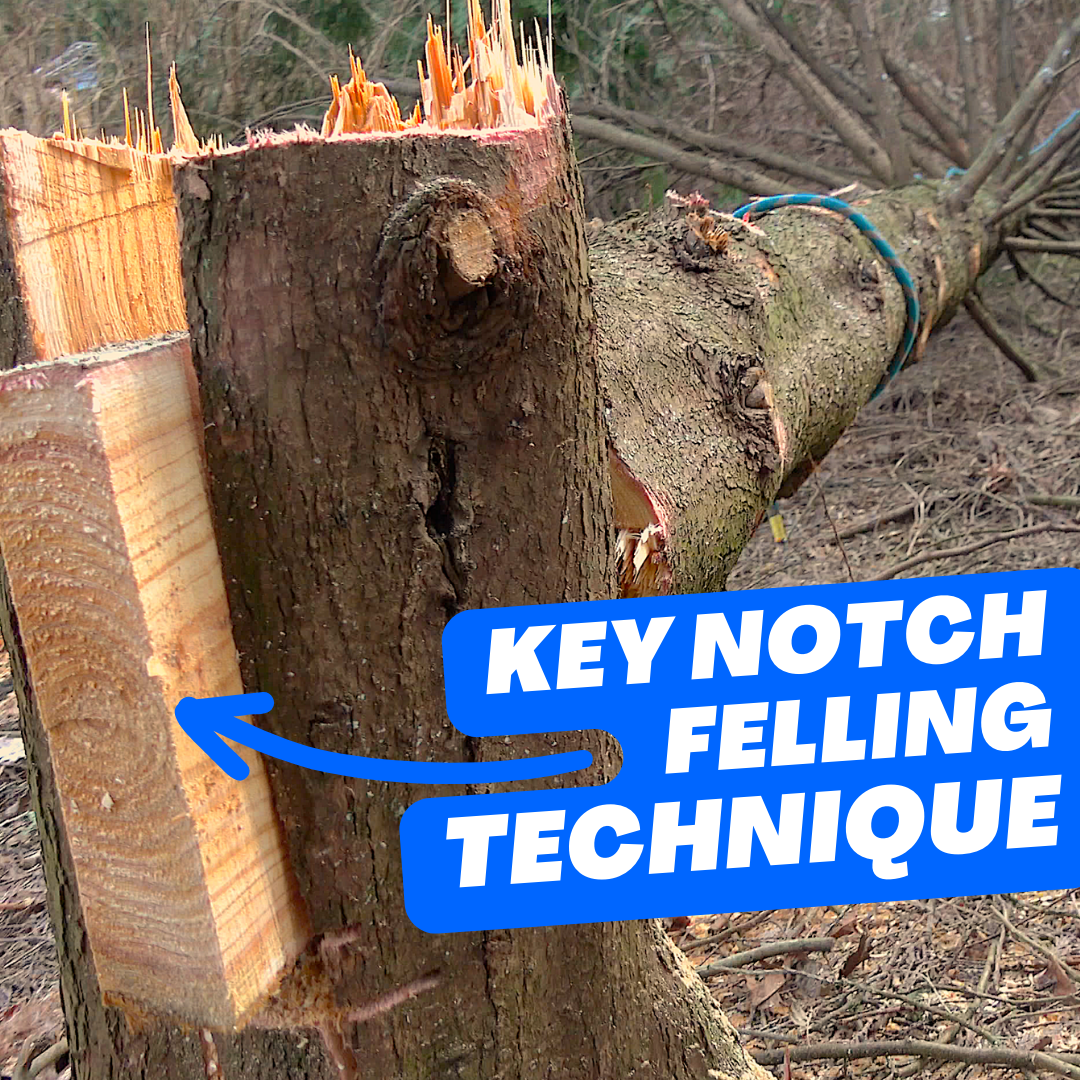
Hemlock removal 5ft diameter 😬😬😬
Description
This tree is an absolute Monster Hemlock tree. The best and most efficient option for this job was to use a crane and lift all the branches and all the trunk into 4 large 30 yard disposal bins.
Everyone had to be alert and on point for this job and the whole crew worked amazingly well. The crane operator was awesome too!!
There were a few minor mistakes on this job and some things that could have been done better, we are always striving for maximum safety, efficiency, communication and enjoyment, but sometimes we fall a little short.
Thank you as always for watching our tree videos 😁👍🤙
Filmed and edited by InTree Media (https://www.intreemedia.com)
Looking for staff? Or looking for work? Visit http://www.climbingarboristjobs.com
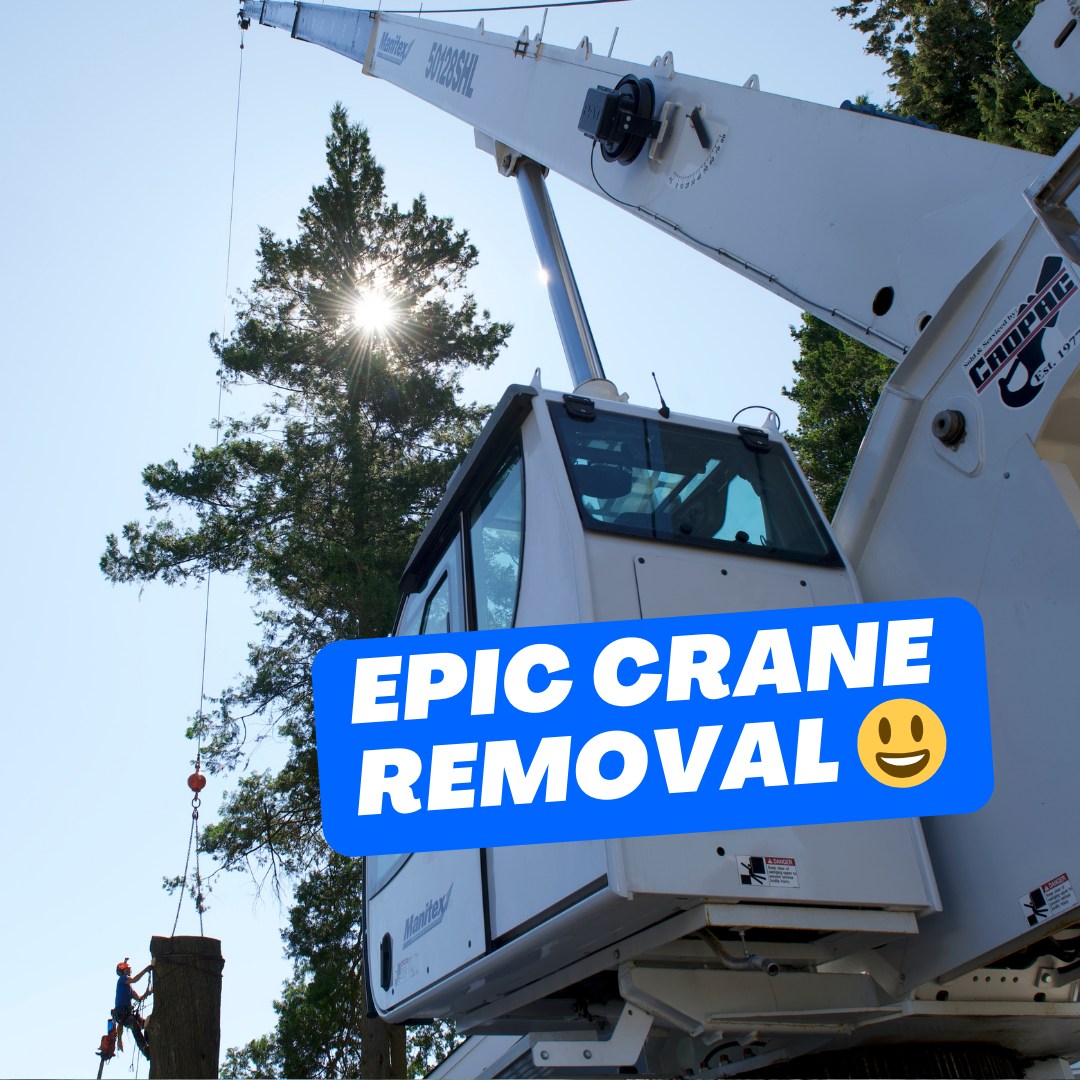
Speedline over house, Drone, Chainsaws = Super fun Cedar tree removal
Description
This was a super fun Western red Cedar tree removal job. We set up a speed line to rig down all the branches over the house to save energy and time. We then blocked down the upper two thirds of the main trunk, and finally felled the bottom 25-30 foot of main trunk. This job ran super smoothly with great, clear communication, understanding of the job and a great rigging setup. We are stoked to have captured this entire job using a drone and 4 GoPro cameras. If you like the video and want to see more like this, subscribe to our channel and click the notification bell next to the subscribe button to be notified each time we upload new content. Feel free to comment below.
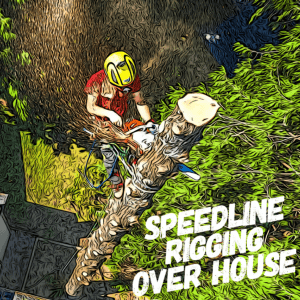
MONSTER Cottonwood tree reductions, these were scary!!
Description
We had 3 Massive Cottonwood trees to heavily reduce in height and width for hazard mitigation purposes. We only found out quite how bad they actually were once getting high up into the canopy. You can tell with the tones of our voices and the heavy breathing that we sure were nervous. This video really doesn’t give you the true scale and height of these trees, or how sketchy they felt.
The adrenaline rush of knocking some of those huge limbs and tops out really was something else.
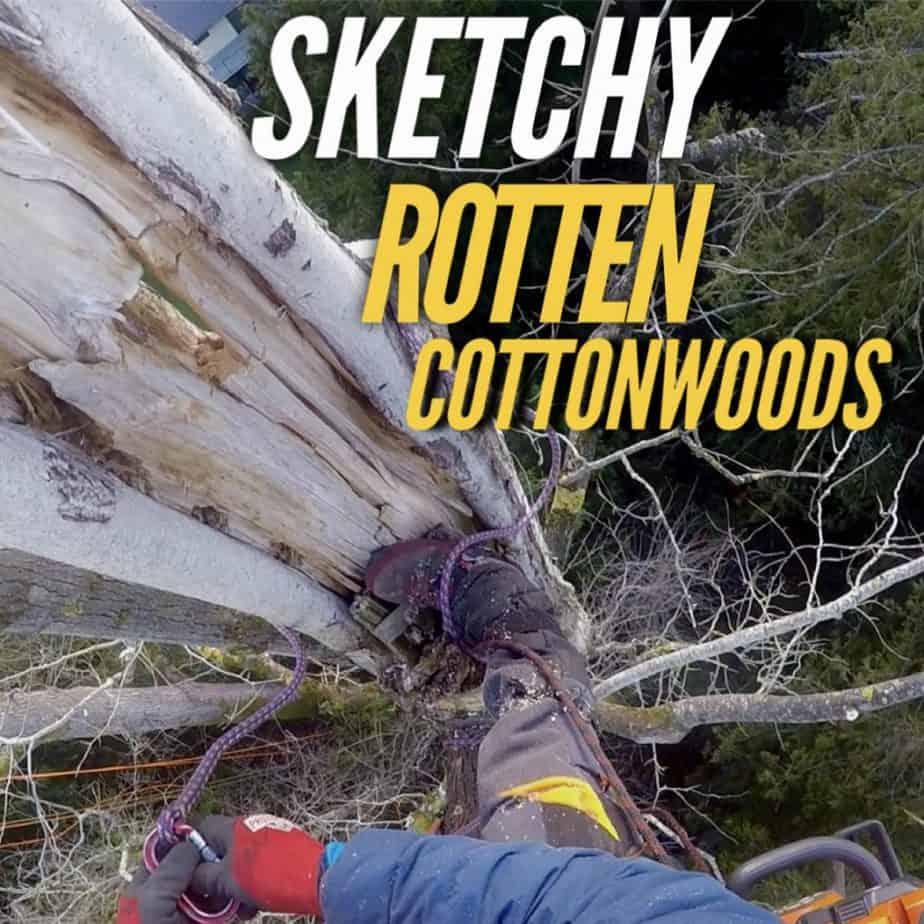
How to set up False Crotch rigging system and why…
Description
You sometimes come across a tree that you have to remove that requires rigging, but the rigging point isn’t ideal for the drop zone. We demonstrate a viable option for moving the rigging point to a more ideal location. Maybe there is an object that can’t be moved like a shed, greenhouse or swimming pool Maybe there is a steep gradient at the base of the tree that flattens out 7or 8 feet away and using this system would mean there is no need to keep scrambling up the bank. This technique is just one of many that can be added to your mental toolbox to provide more options for those tricky jobs.
Use ChipDrop to find a place for your next load of wood chip https://getchipdrop.com/?ref=climbing
Subscribe to the ClimbingArborist channel and hit the notification bell to receive updates of new content: https://www.youtube.com/climbingarborist1
Video filmed and edited by InTree Media: bit.ly/InTreeWebsite
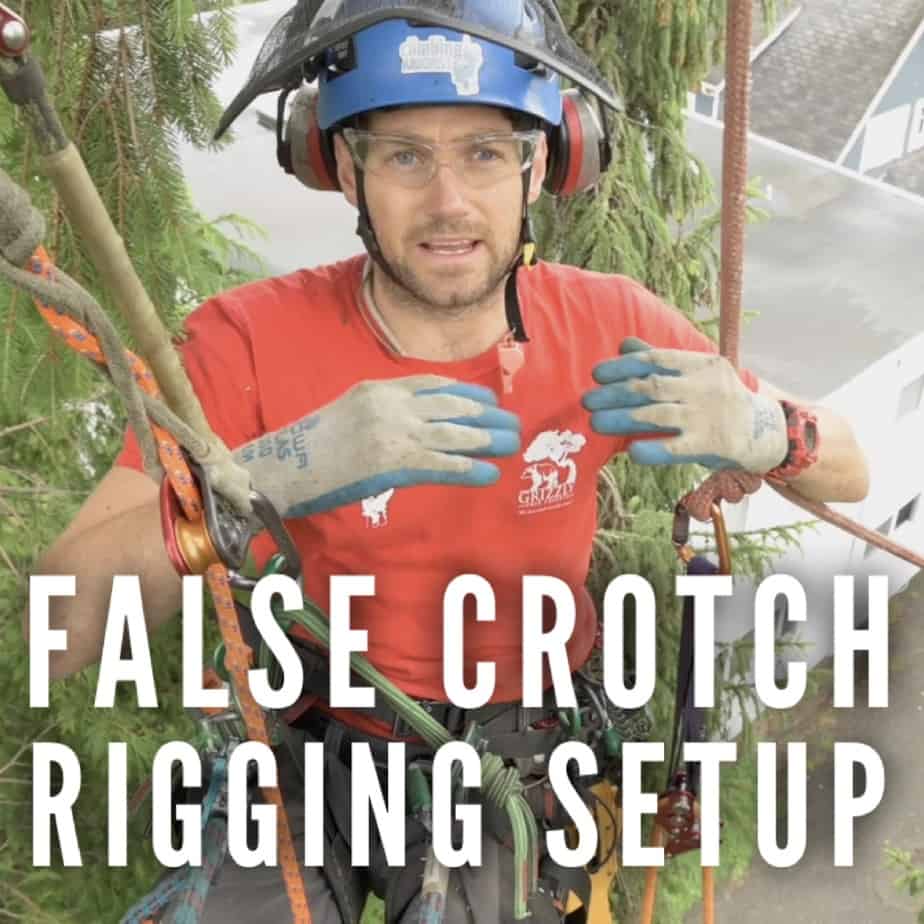
Tree topping, what happens afterwards?
Description
This video is to highlight and show examples of what happens years after trees have been topped. This video can be shown to colleagues, friends, family, neighbours and anyone who wants to 'top trees', has 'topped' their tree etc...
Explanation of;
-What issues may occur at the topping points.
-How topping can create future risks unbeknownst to a homeowner.
-Stress it causes on the tree.
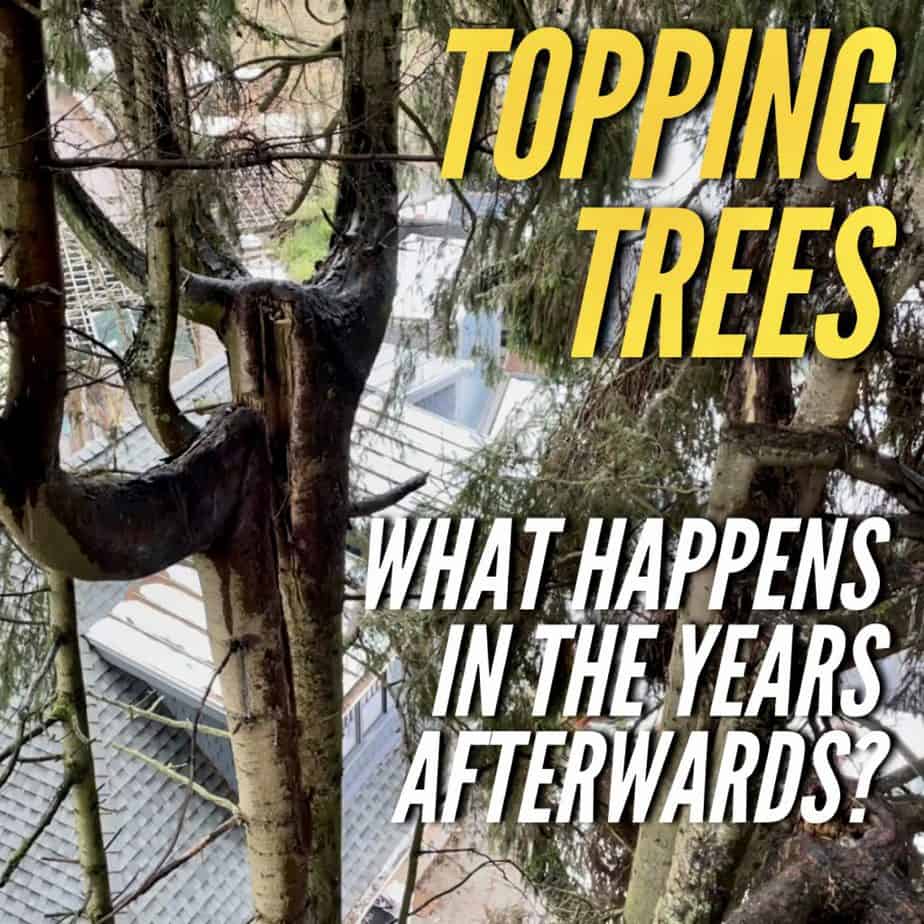
Cherry removal rigging explained
Description
We have a wide spreading, four stem Cherry tree with limited drop zone. In the video you will hear from the whole crew as we explain every decision we make. We explain some simple aspects of the tree removal, and some more specific approaches for this particular tree. We include a bunch of our chat on the headsets so you can understand our job site and plans much better.
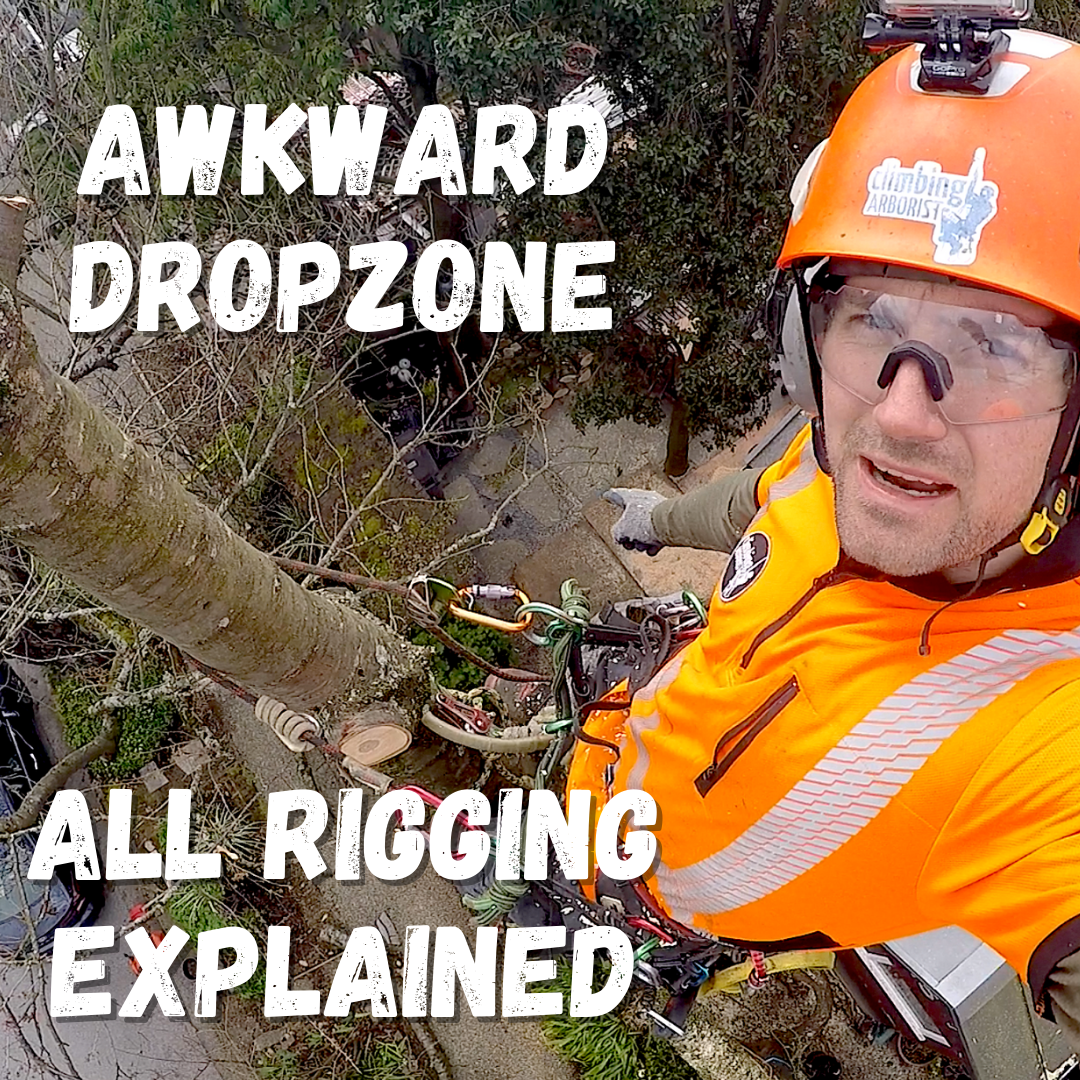
EPIC rigging puzzle of failed tree
Description
We were faced with a Scots Pine tree with a huge stem that had failed onto an apartment building. The tree was still partially attached at the point of failure and the tip end of the stem was resting on the roof of the building.
Partially failed trees are always tricky as you must never assume you know where pressure is in the stem, and you don’t know how wood will react when you start cutting.
We called upon a lot of our rigging knowledge in an attempt to avoid any unexpected movement, dropping of wood and branches and to keep everyone on site safe.
We used 3 rigging systems, double block rigging methods, 5:1 M/A haul systems, and we explain our plan and process as we go.
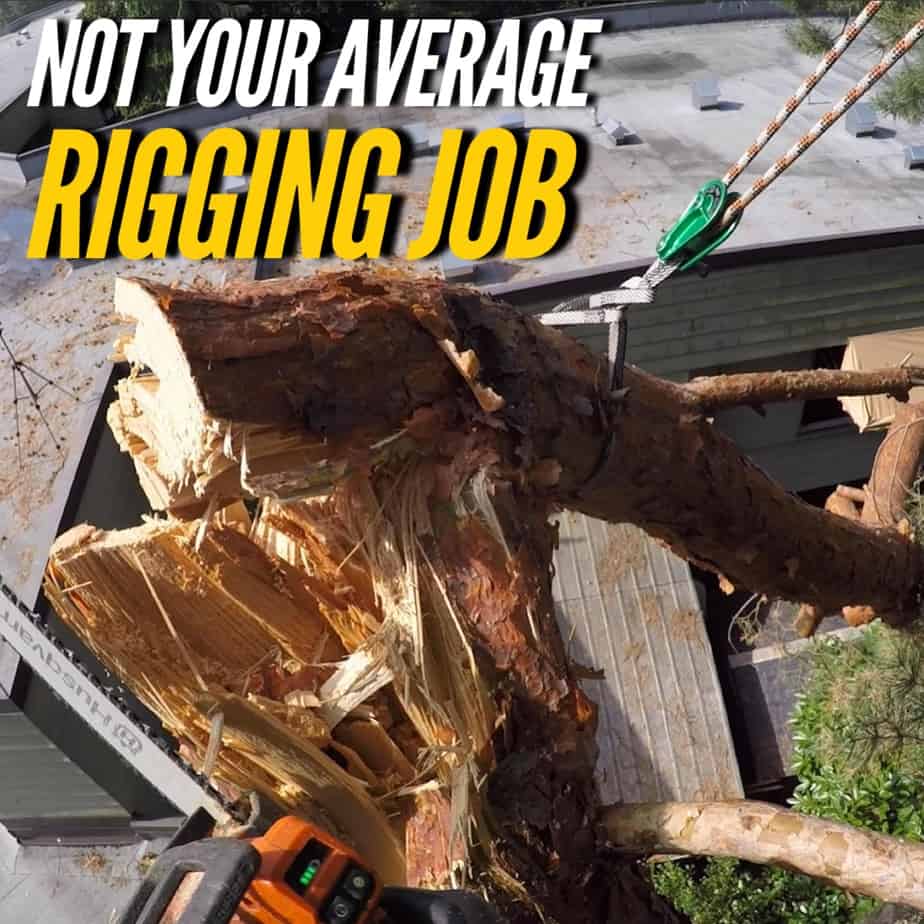
Avoid getting pinned by a branch or log - Rigging techniques for Arborists
Description
Have you ever had a branch or log fall into you when rigging? This could help avoid that from happening again...
Dan talks Conor through a simple but very useful rigging technique to avoid the branch or log coming across the front of him and pinning against his lanyard, harness or his person.
This technique is all about looking at how the branch will fall once you have made the cut, and how to manipulate the rigging line to get the piece to fall the way you want it to go.
If there is no stub to hook the rigging line behind, you can make a cut/groove in the wood with your chainsaw.
Subscribe to the ClimbingArborist channel and hit the notification bell to receive updates of new content: https://www.youtube.com/climbingarborist1
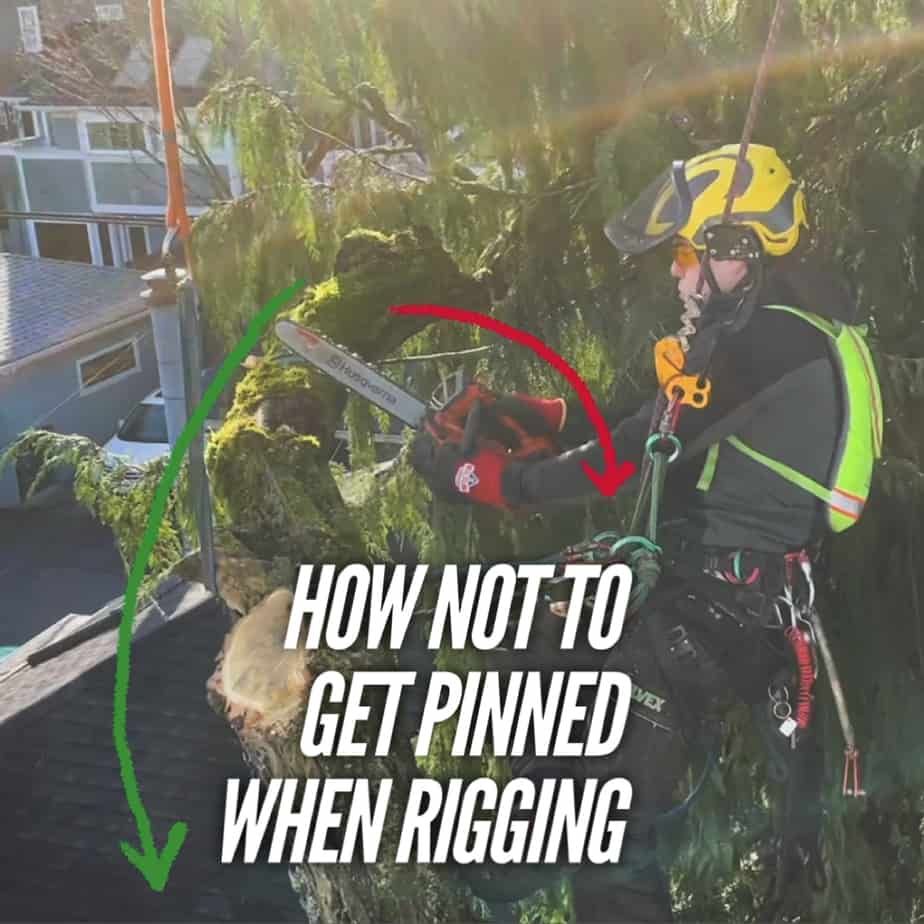
Speedline over house, Drone, Chainsaws = Super fun Cedar tree removal
Description
This was a super interesting and really fun job! We had set this job up to make it as easy and efficient as possible by using a large disposal bin and rigging all of the big, heavy wood into it. This meant that we didn’t have to handle any of the big sections of wood. We minimized cleanup, especially by not making an excessive about of sawdust.

Arborist protecting surfaces when dropping logs
Description
Dan from ClimbingArborist gives a great tip on how to piece down a stem and avoid doing damage to a lawn, patio, driveway etc... without rigging each section down. This is just another trick to have up those long arborist sleeves for when that certain job comes along that makes this the best and most efficient method possible.
Use ChipDrop to find a place for your next load of wood chip https://getchipdrop.com/?ref=climbing
Subscribe to the ClimbingArborist channel and hit the notification bell:
https://www.youtube.com/climbingarborist1
Video filmed and edited by InTree Media: bit.ly/InTreeWebsite
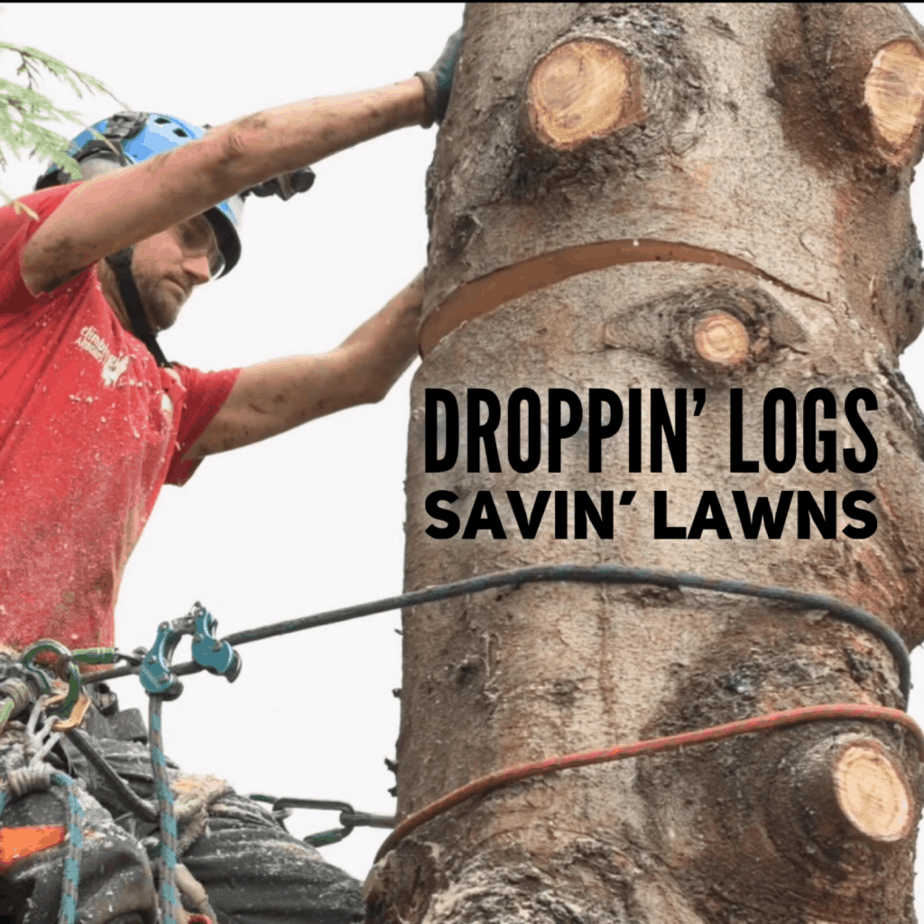
Spruce tree crane removal between houses - Crane work makes for efficient work!!!
Description:
For this job we decided to use a crane to remove this Spruce tree, and drop the branches and trunk into a 30 yard disposal bin. In this particular instance a crane made the most sense, it would mean safe, efficient removal of the tree, remove the heavy and hard manual labour of removing the branches and trunk up the stairs, and it would ultimately be a fun day that kept spirits high, plus there would be no real clean up to do.
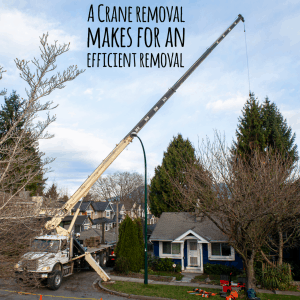
Pollarding trees, how, why and when
Description
Pollarding trees was a style of tree management that began many centuries ago. In this video we Pollard 5 London Plane trees, explain the correct way to pollard, why people and organizations decide to pollard trees, what are the downsides, the management plan and a look at how they respond.
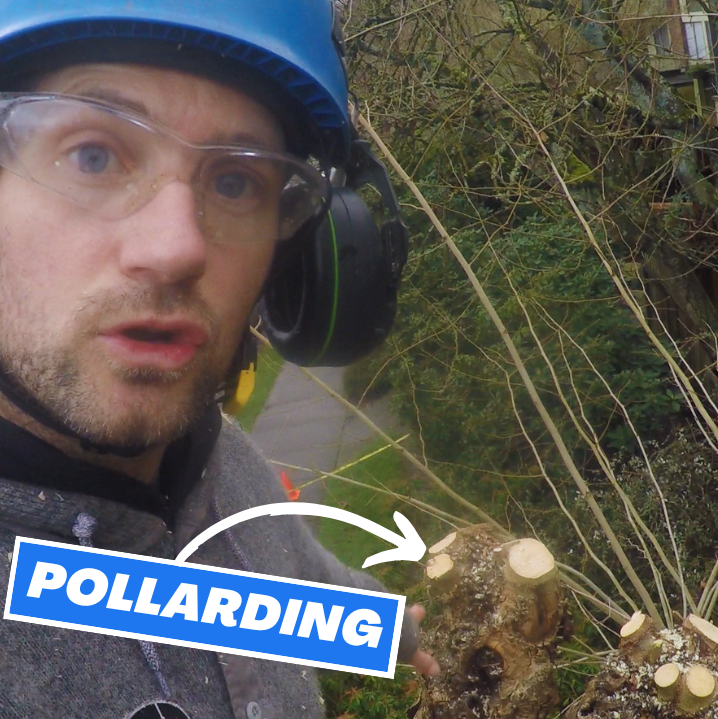
Husqvarna T536Li XP | How long does the battery last?
Description:
Dan removes 2 smallish Cherry trees, chunking them down in 14 inch pieces making a lot of cuts to test how long 1 battery will last in this specific application.
Every tree and every job will have varying factors on the life of the battery, e.g. How hard is the wood to cut through? How many cuts are you making? What are the size of the cuts you are making?
No tree job is the same but this video is to give you an idea of how the saw and battery perform.
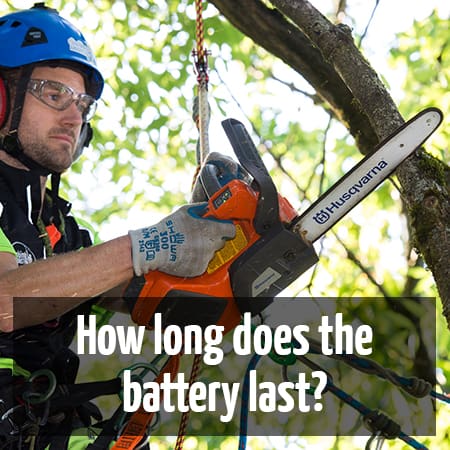
A huge learning experience removing this large Cottonwood with a crane
Description
As arborists we must continue to learn and improve from every experience we have, and this job was certainly a learning experience. Dan was the climber for this job, he has removed in the region of 20-30 trees using a crane over the span of a 17 year career. Dan explains the dangers and the goals of removing large sections with a crane, but it certainly doesn't always go perfectly. Crane jobs can be a huge amount of fun and very easy for the climber, but they can also be extremely dangerous if the climber is not familiar and educated in how to tackle crane work. We recommend if you get the chance, attend a crane removal field day workshop if you think you will take on these kind of jobs. Using a specifically made Crane sling kit is imperative, it makes tying the slings, balancing, and knowing the capabilities of the slings very easy. The slings I use in this video is a specially made kit fro Wesspur tree equipment that meets all required lifting operations safety standards, to check out the kit on their website click this link http://bit.ly/2tklCiR
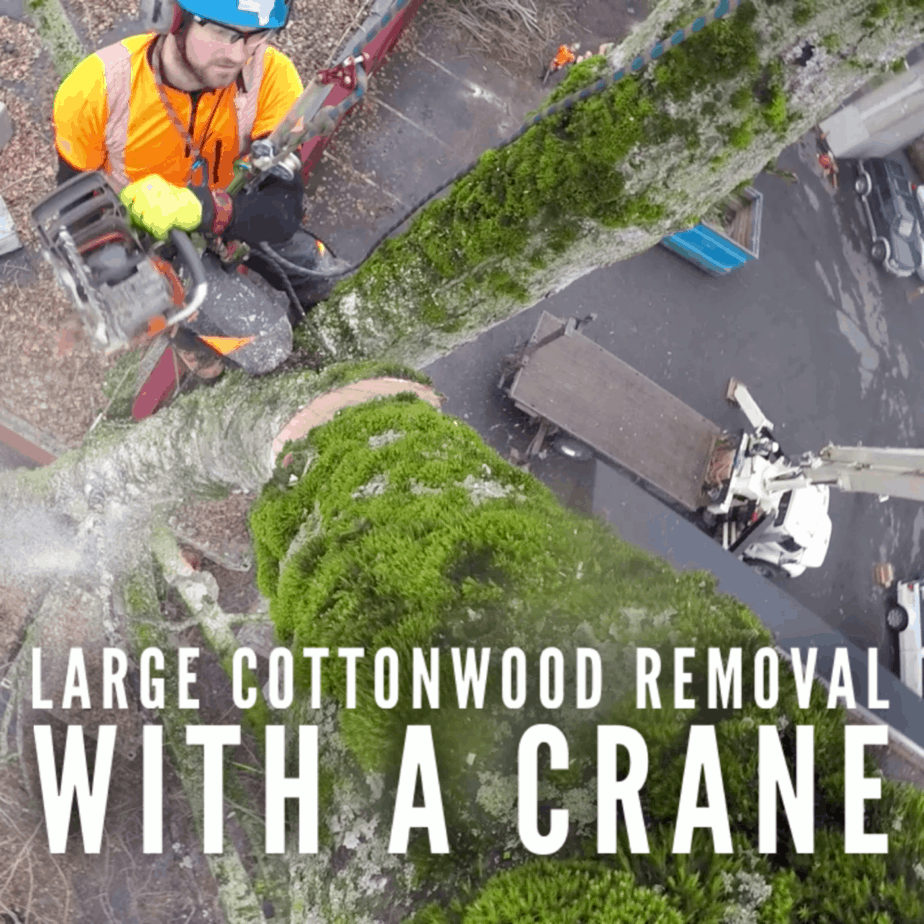
TRAINING DAY / Rigging, log rolling, tip tying, steep banks, tag lines
Description
This is part 2 of the 170ft Fir prune and Hemlock removal job.
On day 2 we remove 2 stone dead trees. This is another great training day for Tom and Conor, and hopefully for you too! Hear our full conversation over the headsets about our rigging strategy, when and how to tip tie trunk wood, using a tag line to control the wood, plus a whole lot more to learn from our discussions. On jobs like this efficiency and flow is the key to a successful job.
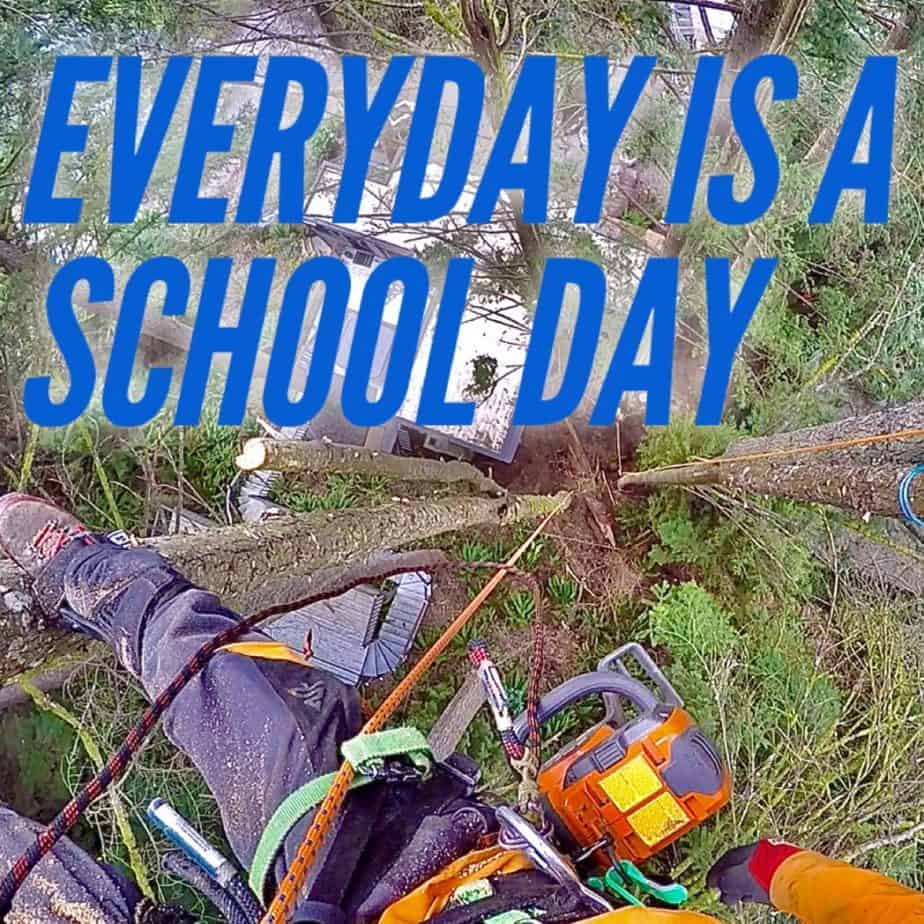
170ft Fir - Traverse, speedline and full crew audio
Description
Just another day with the Climbing Arborist crew. Take a tour on our morning job plan and walk around. See the hazards we are faced with, the steep gradient, the windows on the roof, and how important the plan and setup is to make this a successful job that could go horribly wrong.
Watch as we rig up some pretty slick window protection.
Dan teaches Conor how to use a mechanical advantage setup on his stationary rope, and a little trick with the traverse hook.
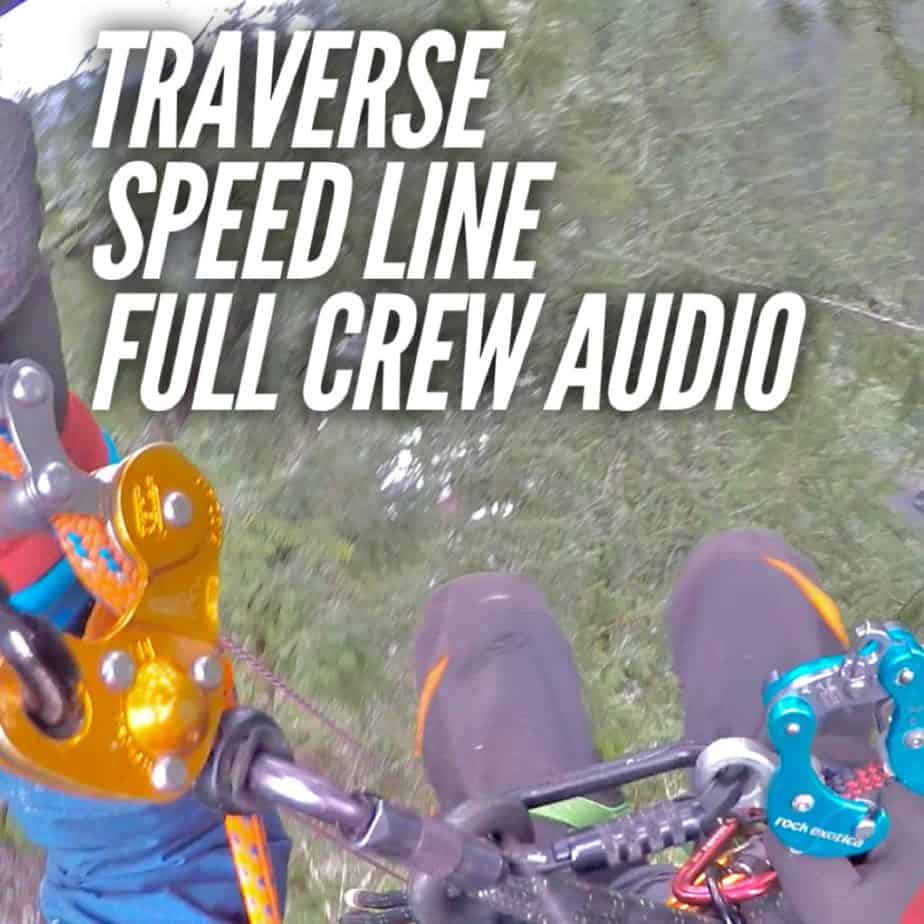
Big stem, large split, hazard mitigation treework
Big stem, large split, hazard mitigation treework
This job is a large, mature Black Locust tree with a nasty split on a very large stem overhanging a coachhouse. This stem also contains other smaller unions with concerning separations. The guys take on some hazard mitigation work to remove this potentially dangerous stem. Dan takes this opportunity to train Conor and Tom on some good rigging practices, using multiple rigging points to create safer systems (explained in the video) and more…
The guys then debrief on the job at the end of the day.
Subscribe to the ClimbingArborist channel: https://www.youtube.com/climbingarborist
Facebook - https://www.facebook.com/ClimbingArborist/
Instagram - https://www.instagram.com/climbingarborist_com/
Podcast - https://www.climbingarborist.com/podcast/
Subscribe to our podcast on iTunes, Sitcher, Spotify, Googleplay and more….
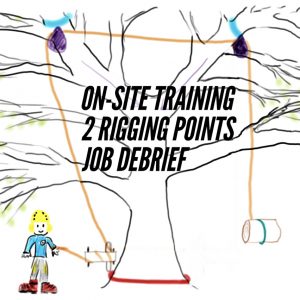
How we remove this tree #1 - Douglas Fir tree removal using a basic speedline setup
Description:
In this video we explain how we take down a Douglas Fir tree close to a house. We explain our thought process for using a very basic speed line setup, why we base anchor the speed line , and then explain why the branches are removed in a certain sequence to enable the speed line to work in the best way. Every single tree presents different problems, has different objects to avoid in its own unique landscape. There are many different ways to take down a tree, we always try to focus on efficiency, and we like to share our thought process with you.
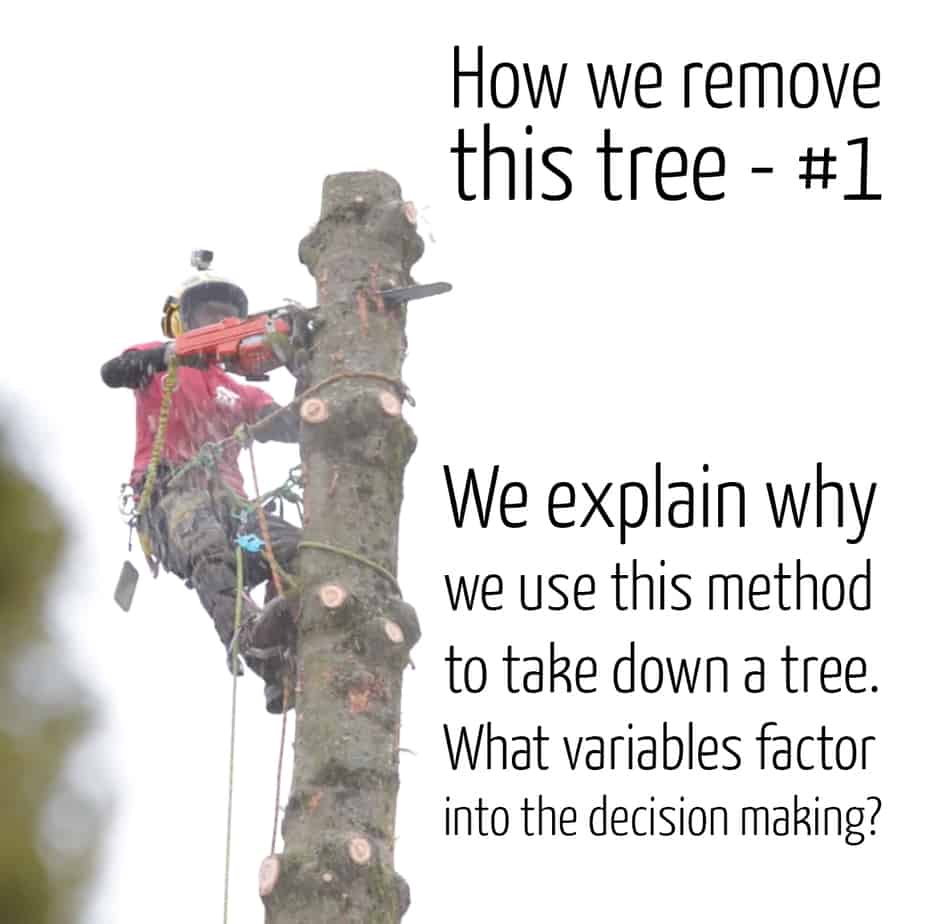
Simple rigging on a Fir tree dismantle
Description:
We were contracted in to remove two Western Hemlock trees from the rear/side of a house. The access down the side of the house was very tight, so we decided the best method and most efficient way for the removal of the trees was to use a controlled speed line/slide line for both the branches and for the trunk wood. The slideline was back tied to ensure each individual tree wasn't exposed to too much side loading.
Follow the link to get the Sena bluetooth headsets we use for communication in this video;
Single unit pack https://amzn.to/2Gw8SdR
Dual unit pack (older version) https://amzn.to/2Gnakz0
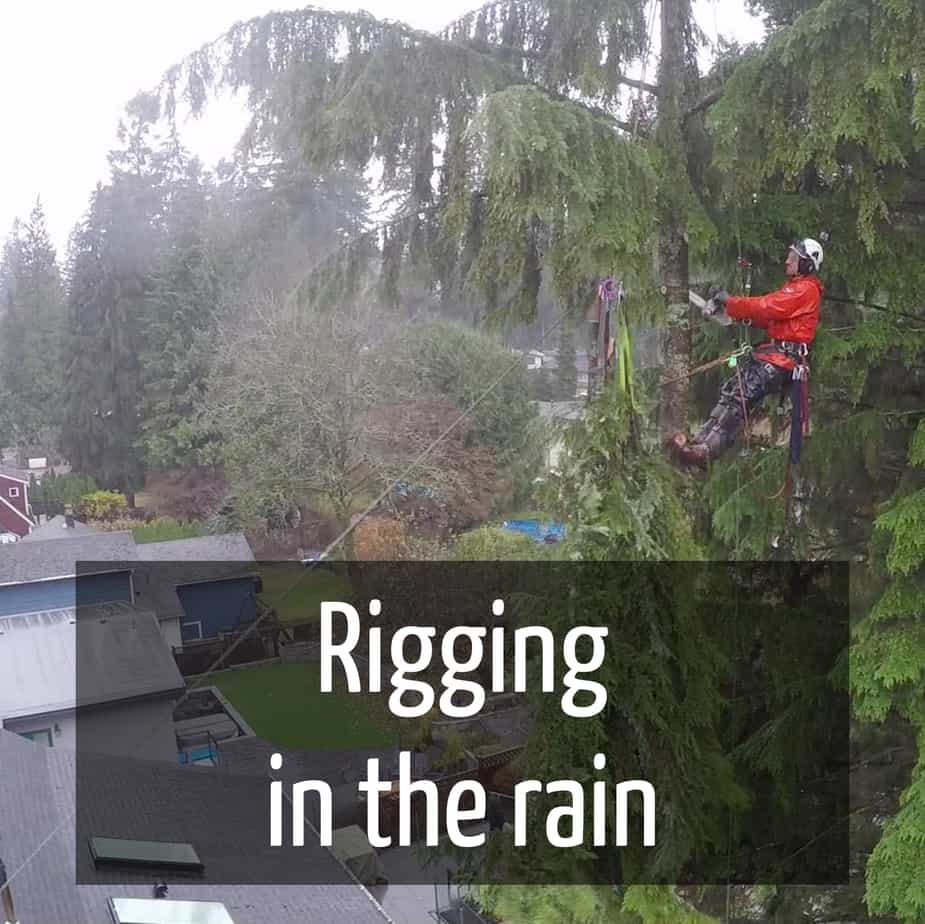
Canopy reduction tree pruning
Dan has 2 medium sized Cherry trees that the client wants reducing in size before they get to large for their location. Dan explains his thought process while undertaking this type of job, how to select a pruning location, and how to keep the tree looking natural and giving it shape.
A height and spread reduction of a tree canopy is a very important skill to have as an arborist, and one that takes time to become proficient at. Trees in the urban environment require maintenance in order to keep the for many years to come without them causing various potential problems, reducing the canopy is one type of tree pruning that can be used if done correctly.
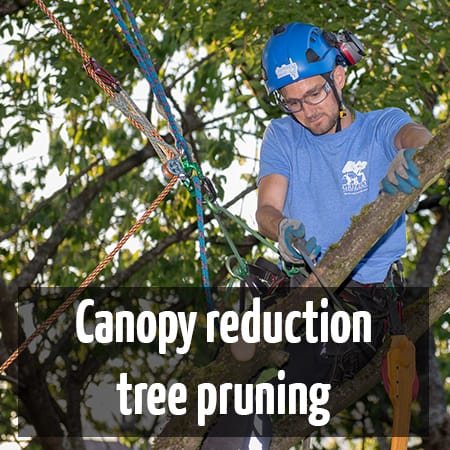
How we remove a tree #3 : The fundamentals
Description:
Dan and Ryan take on this simple Katsura tree removal. The tree is fairly close the the buildings on the south side, over the tope of gardens and fences. On the north side is a large open grassed area that is perfect for a drop zone.
Dan talks through his plan and and his processes as he works through this removal using the basic fundamentals for removing a tree.
Dan explains why in most cases the lower branches should be removed first and the arborist works up removing the canopy. He also explains how you can maximize efficiency when using your second tie in point by thinking ahead about how branches can be reached a specific 2nd tie in point.
In this video you will see the good work positioning which prevent the climber from straining and using tools at full stretch, but instead the handsaw and chainsaw are used in a position of full control and strength.
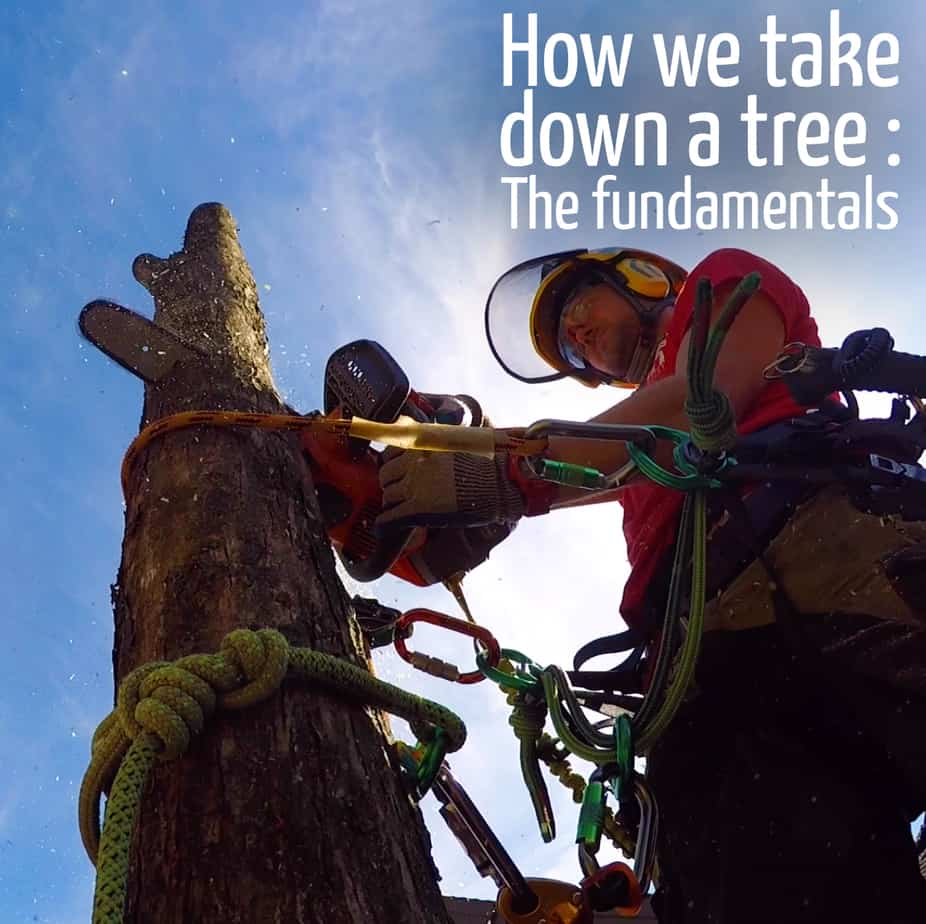
How we take down a tree #2 - Birch tree removal
Description
Justin and Dan remove this Birch tree that is riddled with ‘Bronze Birch borer’. This is a very simple and straight forward tree removal job for two men. The guys do some simple light rigging of branches over the hedge to prevent damage and into neighbour’s garden. The client’s garden has soil around the base of the trunk and lawn for the majority of the front garden. Justin drops many branches into the clients front garden which are left in situ to absorb some of the impact from logs that will be dropped when blocking the trunk down in small sections.
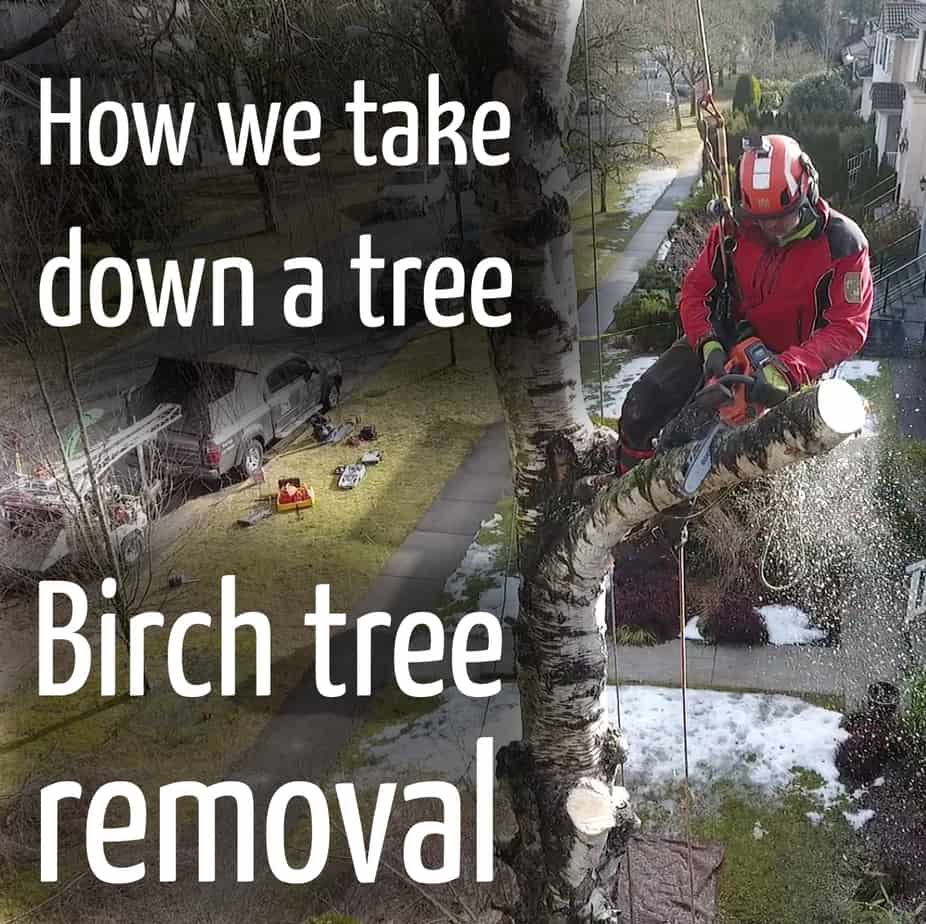
Arborist Conor removing a large Maple tree
Description
Conor is an up and coming climber that works with me part time. He has 3-4 years of climbing experience and is improving everyday. Conor was keen to take on his biggest climbing treework challenge to date with the removal of this large dead Maple tree. Conor has gained a lot of skill over his short career as an arborist, but his best attribute is his humbleness, and willing to learn as many techniques, procedures and tips as he us given.
We all know the feeling of accomplishing a job that was bigger, more complex and more mentally challenging than we had ever before. Congratulations on conquering this one bro!
Video filmed and edited by InTree Media: bit.ly/InTreeWebsite
#ClimbingArborist #arborist #treesurgeon

Pruning with the V-rig system
A short film of a Sweet Chestnut tree that we had to prune to remove the deadwood, prune back from the property and lightly thin the canopy. A really good tree to setup a V-rig system for excellent work positioning.
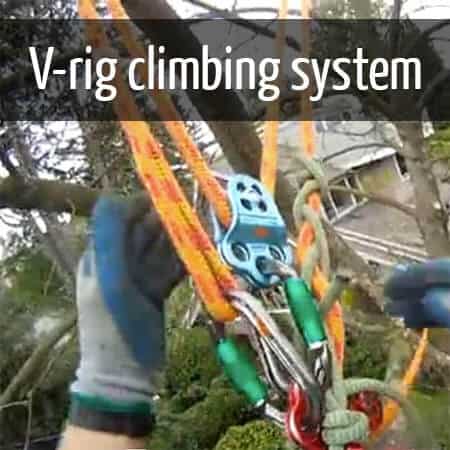
Simple rigging on a Fir tree dismantle
Description:
Dan is called in to prune a Robinia pseudoacacia tree, with the aim of reducing the tree so that it can be maintained on a 3-4 yearly cycle. Due to the small rear garden and limited space, the goal is to never let the tree get larger than it is prior to pruning.
Dan explains his plan and approach to the pruning work, you will see the choices he makes as he prunes the tree, and finally Dan will revisits the property 1 year on to see the results and response from the tree.
Revisiting trees that we prune is such a valuable learning tool for any arborist. We get to see how different species react to different types of pruning, and we can then use this knowledge for future pruning.
We hope to compile more and more of this type of video in which we revisit the property and discuss the response from the tree.
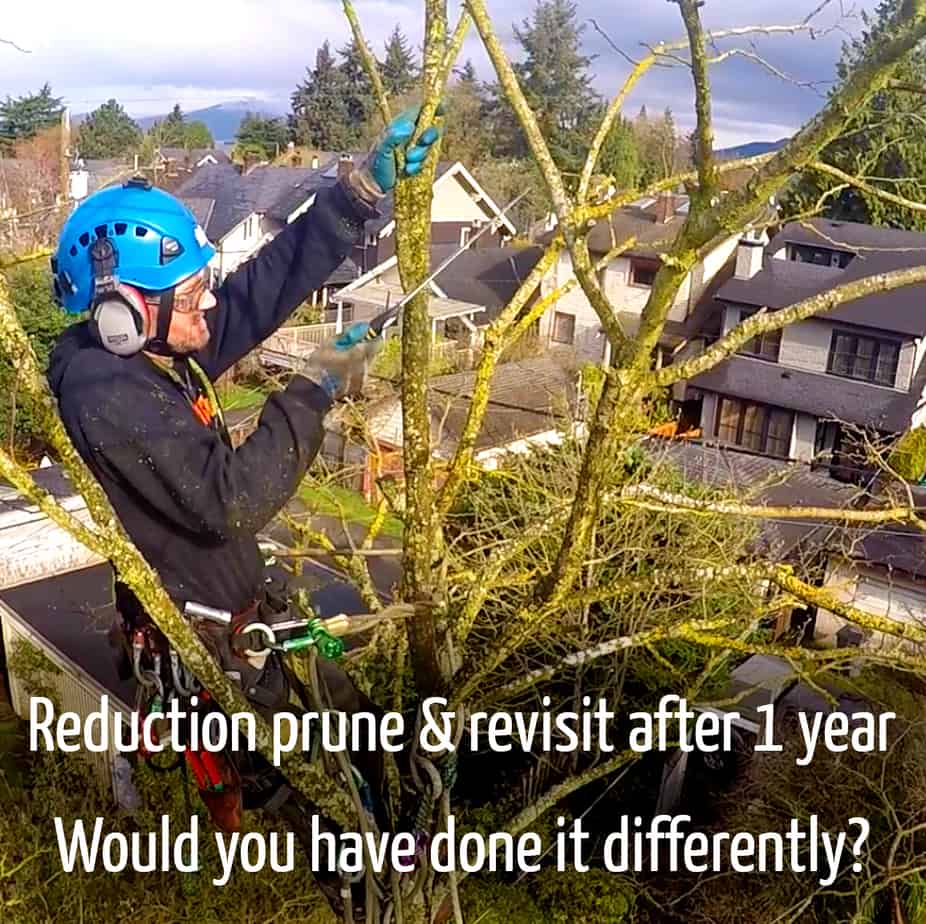
Large Douglas fir tree removal Good communication is key
This is a short film of a residential clients property with a large dead Douglas Fir tree that is to be removed. This highlights the ease of communication between the crew on site via the use of Sena bluetooth communication headsets that are built into the helmets we wear on a daily basis.
Good communication is paramount within arboriculture. This video demonstrates how clear lines of communication can create a safer work environment, how much more efficient the site can operate, with less stress and frustration from shouting, and you can have some banter all at the same time!!
Follow the link to get the Sena bluetooth headsets we use for communication in this video;
Single unit pack https://amzn.to/2Gw8SdR
Dual unit pack (older version) https://amzn.to/2Gnakz0
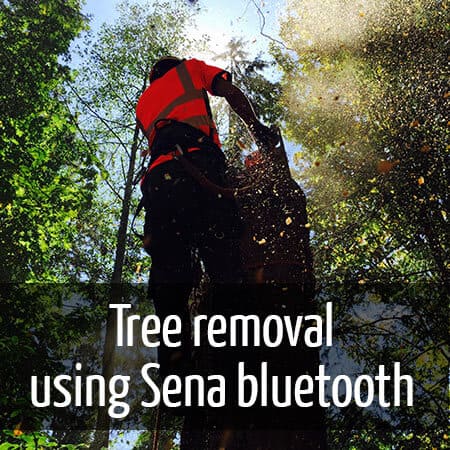
OFF THE GRID - TREEWORK up in the mountains
Description
After a 15 minute hike through the snow to get to an off grid cabin, we are faced with a failed 100ft mountain Fir that is hung up in another tree. If the tree comes dislodged it will come crashing down onto the tool shed. We hadn't seen the tree prior to arrival, so we came up with a plan that day, and the hike in meant we had to limit the equipment we took with us.
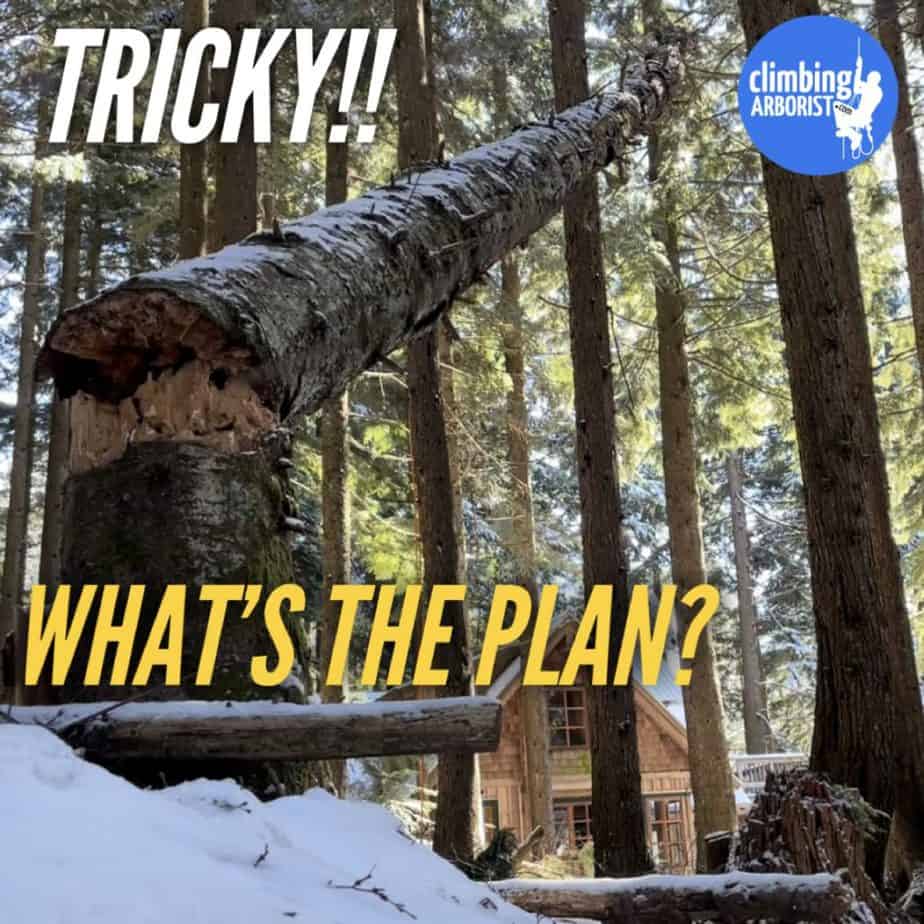
Douglas Fir tree hazard pruning on Eagle Island
Description
Dan lands a fantastic pruning job the very tiny Eagle Island in West Vancouver, B.C, Canada.
The specification for pruning was to removal all deadwood and hazardous branches.
Dan was incredibly lucky to get such beautiful weather on this cold winter day.
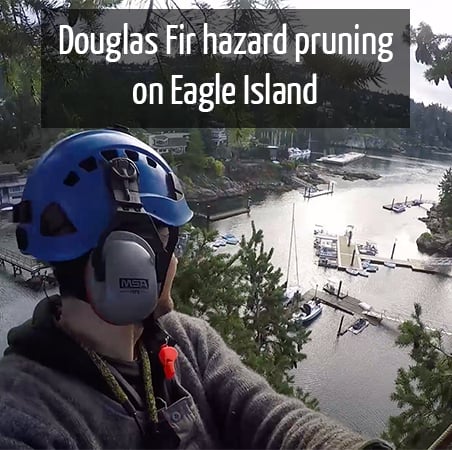
Simple rigging on a Fir tree dismantle
Description:
Dan from Grizzly tree experts and ClimbingArborist.com shows how he goes about making a wildlife stem from a tree that is being taken down, but can be left to attract birds, insects and decay.
Good, comfortable positioning on the stem is essential when making these type of cuts. The correct grip of the chainsaw and good chainsaw handling skills are paramount when making a wildlife stem as Dan explains.....
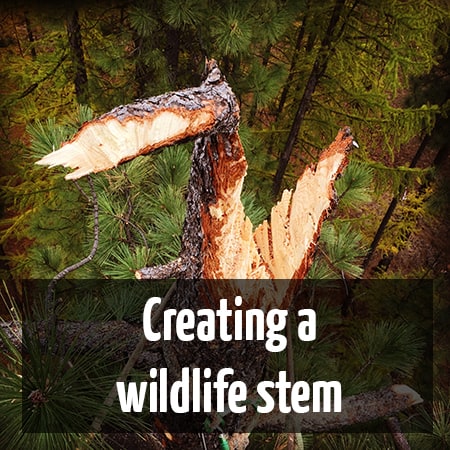
2 Hemlock tree removals in the sun & snow
Description
Join Dan on a glorious Winters day out in western Canada soaking up the sunshine with snow on the ground. Dan is tasked with 2 Western Hemlock trees to remove, 1 live and 1 very nearly dead. The job is to get the trees down safely and leave all debris on site (which is nice). There are a few things to avoid (house and power lines) so we decided to bring the trees down the safe way, in small pieces.
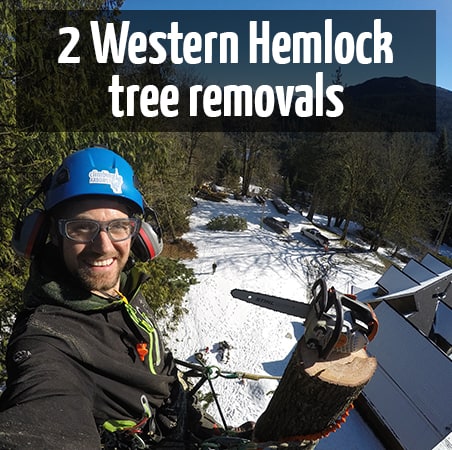
Cedar tree removal & Maple tree hazard prune
Description
Dan from ClimbingArborist.com & Grizzly Tree Experts undertakes the removal of a hazardous Western Red Cedar tree stem, and some risk management pruning on a Big leaf Maple tree with a huge amount of dead and dying wood in the canopy above a common area within the housing complex
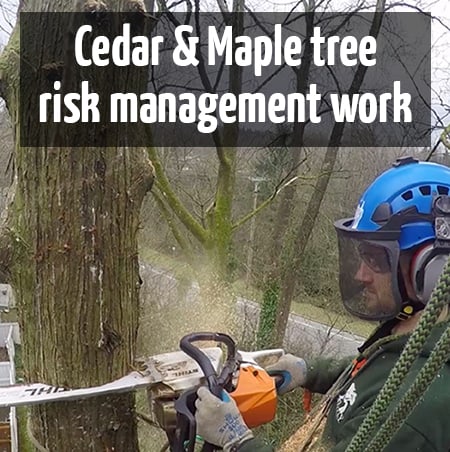
Cedrus deodara tree removal & milling the trunk w/ Alaskan mill
Description
Dan had this horrendous looking, small but chunky Cedrus deodara tree to remove. There was nothing complicated about taking the tree down, but I thought it would be interesting to show the process of milling up the trunk into slabs on site. I slabbed the wood into 2 1/2 inch thick slabs for the bottom section of the trunk, and then milled some thinner pieces to 1 " thick to make some planter boxes.
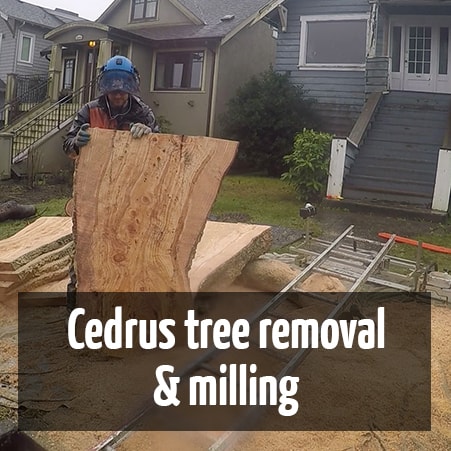
Husqvarna T536Li XP | How long does the battery last?
Description:
This job started out with the aim of finding a broken water pipe, best guess was it had broken at the exit from the building. After being unable to find the pipe, we moved on to plan B, this was to dig a trench along side the building and the down the garden between the trees for laying a new water line to the guest house at the bottom of the property. The airspade was extremely useful for this specific work, as we had to remove much of the small fibrous roots, but wanted to leave as much intact as was feasible. The excavation that was done with the Airspade was necessary, and made it as easy as it could have been. Using another method for excavation would have meant much more damage to the tree roots.
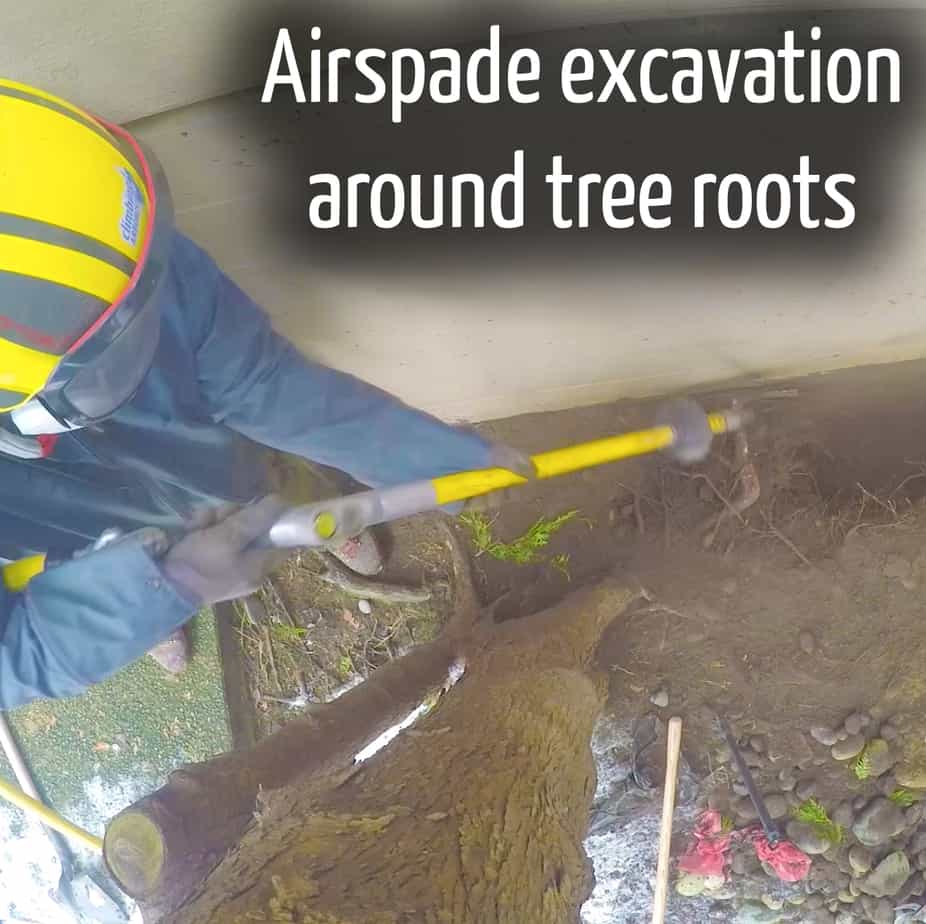
Wildlife habitat creation project
Description:
A project commissioned by BC ministry of forests, lands and natural resource operations with the intent of creating habitat for specific bird species within eastern British Columbia. A certain number of trees were on provincial land were allocated for this program.
We used 3 different techniques using different fungus depending upon the what bird species and the type of rot/decay we were hoping to achieve.
We were not using traditional, good pruning practice as we were trying to create natural tears as much as possible, for both appearance and exposure to potential fungus. Please DO NOT copy the branch removal techniques used in this video unless you are trying to achieve the same goal.
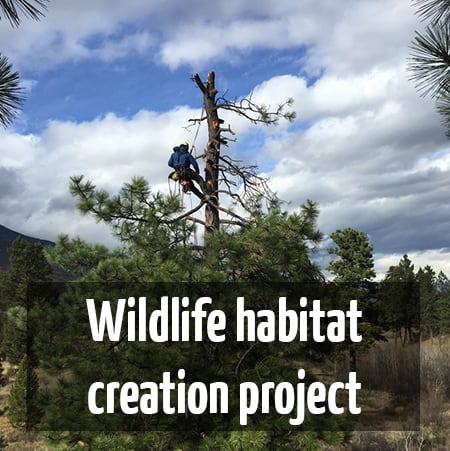
Arborist protecting surfaces when dropping logs
Description
A montage of our best treework from 2020.
.
Featuring Dan, Conor and Marten
.
Filmed by
Intree media ( intreemedia.com ) & Climbing Arborist
